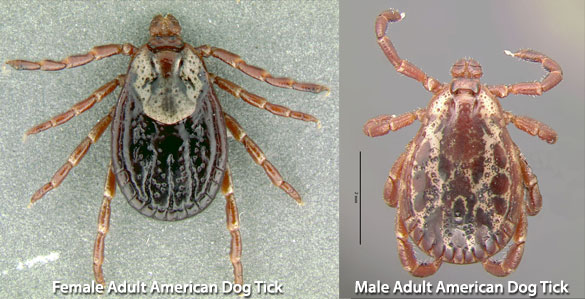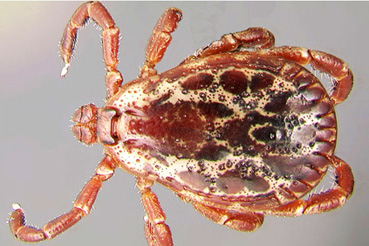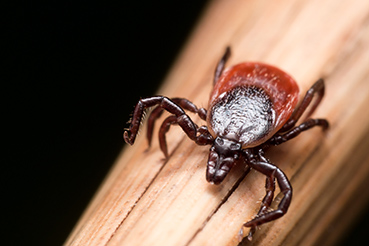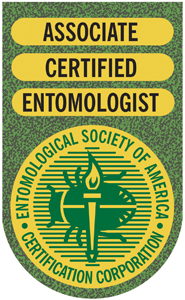Tick Control
Contact TNR Exterminators For ALL Of Your Pest Control Needs
(800) 352-3776
We Service The Five Boroughs of New York City, Long Island and New Jersey
Tick Infestations
All ticks are parasitic, feeding on the blood of mammals, birds, and reptiles. Ticks are a most important vector of disease to domestic animals and second only to mosquitoes as vectors of disease to humans. Certain ticks inject venom while feeding on their hosts that produces a paralysis that can be fatal if the tick is not removed.
Soft Ticks: Ticks in North America are classified into two families, the “soft” ticks or Argasidae with about 10 different species and the “hard” ticks or Ixodidae with about 80 different species. Soft ticks lack a scutum or hard dorsal plate, are soft bodied, and the mouthparts are ventral and cannot be seen from above. The soft ticks are mainly nocturnal, feeding rapidly during the night and concealing themselves during the day in cracks near the nest of their host. The female soft tick indulges in several blood meals and generally lays small batches of eggs after each feeding until 100 to 200 total eggs are laid. The eggs develop into nymphs that may molt several times before reaching the adult stage. Different species of soft tick can be found in poultry houses, inside the ears of rabbits and in bat caves or rodent burrows. Soft ticks are generally not found on man.
Hard Ticks: The hard ticks are more commonly known, especially those ticks that transmit human disease. Hard ticks have a hard dorsal plate called the scutum, and the mouthparts protrude and can be seen from above. These ticks, after settling on their hosts, essentially turn into an automatic pump, extracting blood for nourishment. After finishing her final blood meal, the engorged female hard tick drops off the host animal and can lay from 2,000 to 18,000 eggs on the ground. The first stage to hatch from the egg is called a larva. Larvae have three pairs of legs, are active and generally attach to small animals. After they feed and drop off, they molt to become a first instar nymph with four pairs of legs. In hard ticks, there is only a single nymphal stage. Ticks use claws at the tip of their legs to attach to an animal. After engorgement on blood, they drop off and molt to become adults with four pairs of legs. Hard ticks may feed on one, two or three different host animals.
Identification: There are two common species of ticks found on man in New England:

The American dog tick, Dermacentor variabilis, can be recognized by its larger size and speckled white or creamy dorsal appearance. Females have a shorter “shield” or dorsal plate while the males are slightly smaller with a dorsal plate that covers most of their body. People normally find female adult ticks on their person as these ticks search for a blood meal. Male ticks and nymphs and larvae feed on smaller mammals. Dog ticks are normally very flat in appearance unless they are expanding with blood. Their mouth parts are short; once they cut into the skin with their two chelicerae, they can anchor themselves with a single barbed structure called a hypostome. Because of the barbs, it is important to pull the tick out slowly and straight.
The black-legged or deer tick, Ixodes scapularis, can be recognized by its much smaller size and reddish dorsal appearance. Females have a shorter dorsal plate and a “tear-drop shape. Males are smaller with a rounder dorsal plate that covers most of their body. The mouth parts of the female black-legged deer tick are longer than the male and longer than the American dog tick mouth parts. The larval tick is no bigger than the size of the period at the end of this sentence.
Biology
Life History: Ticks prefer woods and tall grassy areas along animal trails. In some years, ticks may become locally abundant, especially in wet areas. A female adult tick may lay thousands of eggs. Once the eggs hatch, the larval ticks rapidly disperse and normally find a small mammal or lizard as a host. Hosts may be detected by a combination of movement, color, carbon dioxide and other factors. Ticks are able to wait for extended periods of time until a host passes by. After feeding, larval ticks drop off, molt to a nymph and may feed on a different mammal host. As an adult, ticks often latch onto man although they may also attach to deer or other mammals. As the ticks develop from small larvae and nymphs into larger adults, they move higher up in the vegetation and wait to grasp onto a passing small mammal, dog, deer or man.
Disease: The first tick recognized as a vector for human disease was the wood tick Dermacentor andersoni, which was shown early in this century to be the causative agent of Rocky Mountain spotted fever. This pathogen--a small, gram-negative intracellular coccobacillus belongs to the family Rickettsiaceae (R. rickettsii). Rocky Mountain spotted fever has now spread from the Rockies to the south central, southern, and eastern regions of the US, where the disease is associated with the dog tick Dermacentor variablis. About 1000 cases of Rocky Mountain spotted fever are reported annually, and new foci of infection are continually being identified. Rocky Mountain spotted fever has a high mortality rate in man when untreated.
The black-legged deer tick, Ixodes scapularis transmits Lyme disease, a disease caused by a spiral shaped bacterial microbe called Borrelia burgdorferi. This disease is known from Europe, Africa, Asia and in almost all US states. It is especially common in the Northeast, in Minnesota and in northern California.
Human babesiosis, a malaria-like infection that is sometimes fatal, was first convincingly diagnosed in the United States on Nantucket Island, Massachusetts in the1970s. In the Northeast, the blacklegged deer tick is the principal vector transmitting the etiologic agent, Babesia microti. This tick is also the primary vector of the Lyme disease spirochete, Borrelia bugdorferi.
A second tick-borne rickettsial disease that is increasing in frequency and distribution is ehrlichiosis. It is caused by gram-negative intracellular rickettsia of the Ehrlichia genus, primarily Ehrlichia chaffeensis. Ehrlichiosis is widely distributed and more common in many areas than Rocky Mountain spotted fever.
Recently cases of human granulocytic ehrlichiosis have been described in the northern US in areas where Lyme disease and babesiosis are endemic. Transmission by Ixodes scapularis or Dermacentor variabilis is suspected.
Control
Removing Engorged Ticks from Animals or Humans: An engorged tick is hard to remove after it has become attached. Its head is partially hidden by its enormously enlarged abdomen and its mouth parts are well attached into the skin. The following procedure will help you to remove these ticks quickly and safely. The best method is to grasp the tick with fine tweezers, as near the skin as you can, and gently pull straight out. Since the Lyme bacteria and other diseases are injected by the tick when it bites, you must be careful not to squeeze the tick when removing it which could result in more bacteria being injected. Clean the bite with soap and water. Do NOT attempt to remove with lighted cigarettes, matches, nail polish, or Vaseline. Save the tick in case of illness so that a more accurate diagnosis can be made. Dogs can catch Lyme disease from ticks and may need to be treated by a Veterinarian.
Avoiding Tick bites: Do not let the fear of ticks prevent you from enjoying the warmer months of the year. If you are in a tick infested area you should be wearing long, light colored pants tucked into your socks. This will help you to spot ticks before they become attached. Ticks rest in brushy vegetation waiting for an animal to pass by; they are not found as often in open mowed areas. A careful check for ticks after a day of outside activity will help to prevent tick disease since ticks must remain attached for many hours before the disease organism is transmitted.
We Service The Five Boroughs of New York City, Long Island and New Jersey
Contact TNR Exterminators For ALL Of Your Pest Control Needs | (800) 352-3776





